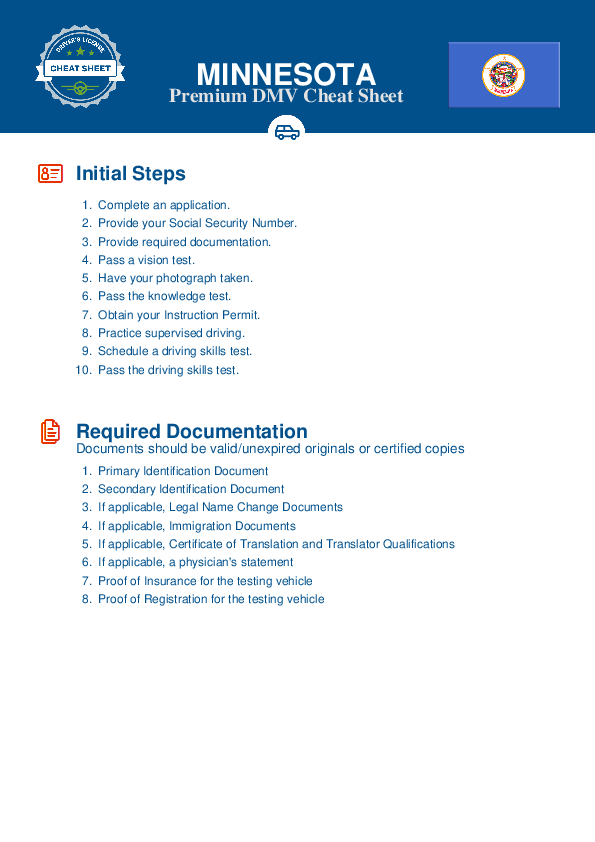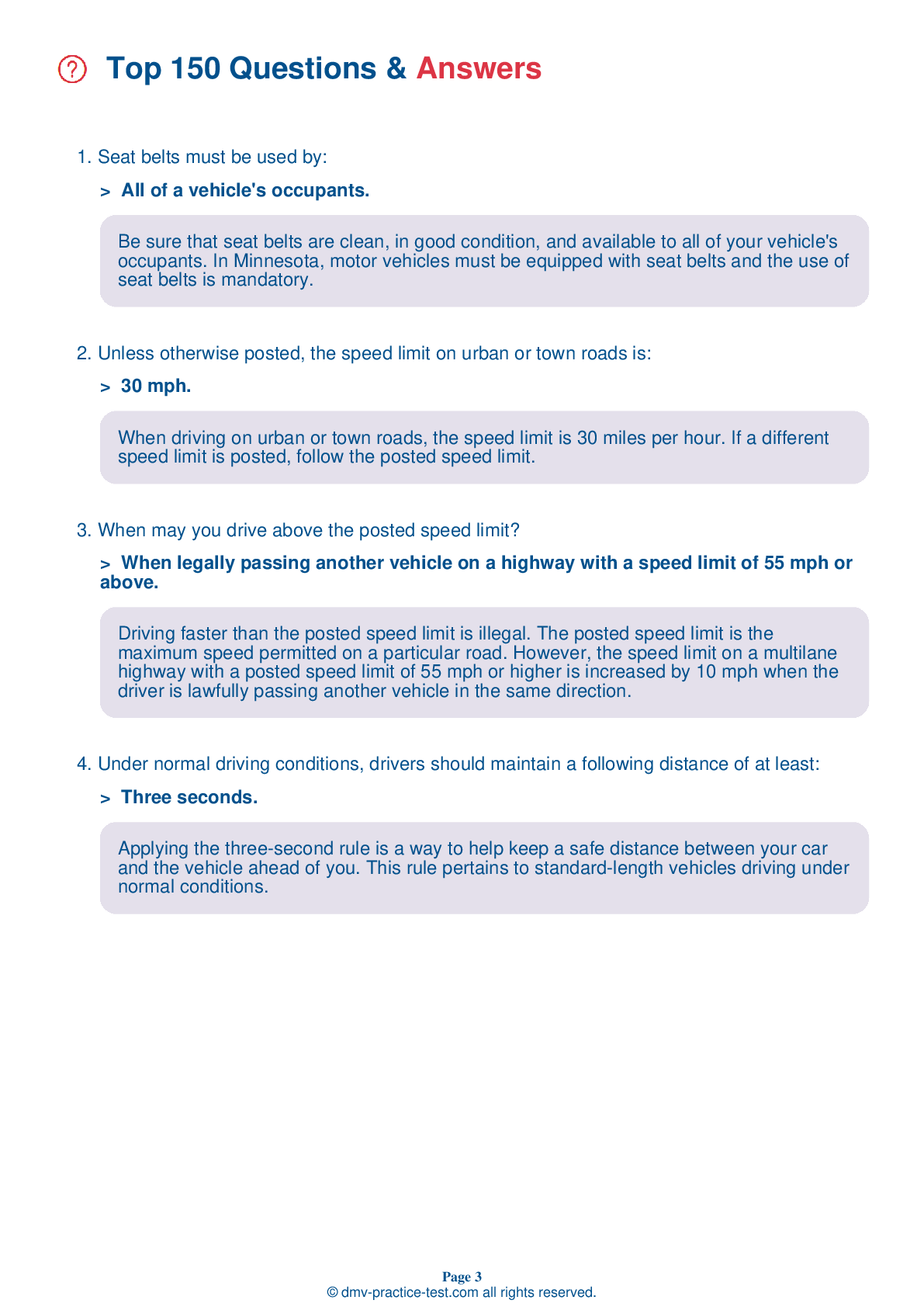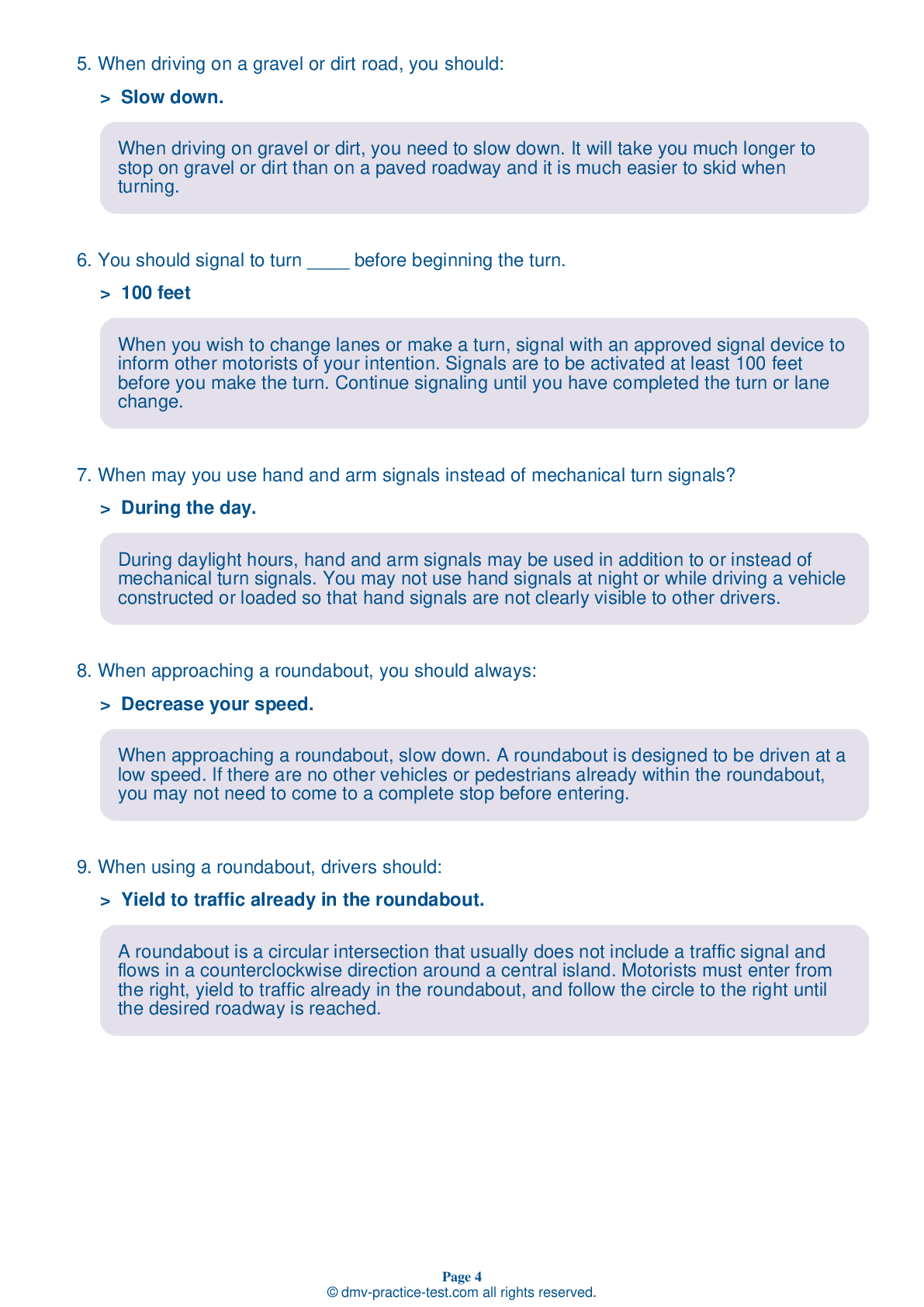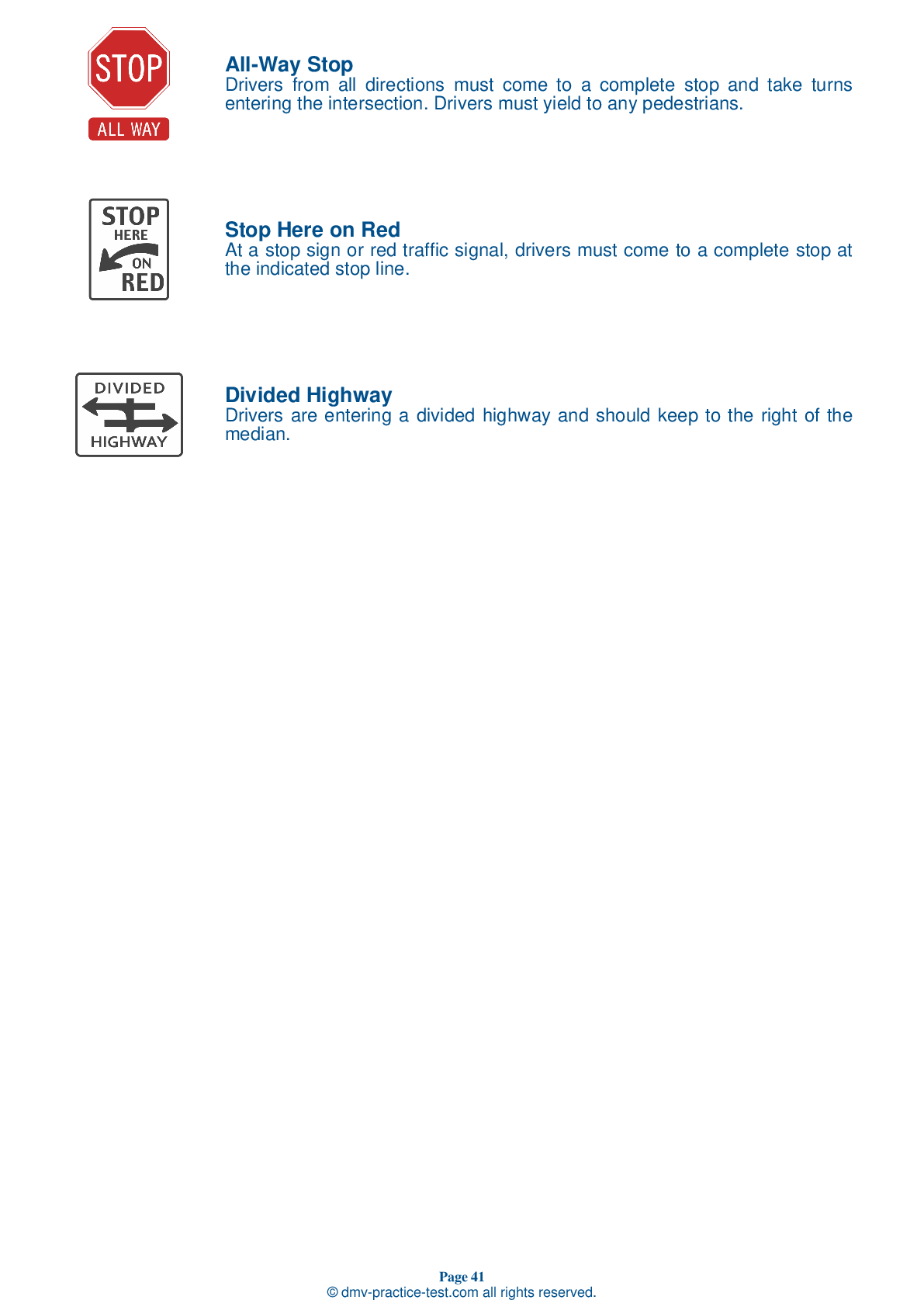FREE Minnesota DMV Practice Test #3 Page 2 of 5
The Minnesota DMV practise examinations have been updated for January 2025. It includes questions based on the Minnesota Driver Handbook's most essential traffic signals and laws for 2025. Use actual questions that are very similar (often identical!) to the DMV driving permit test and driver's licence exam to study for the DMV driving permit test and driver's licence exam.
On the practise exam, each question gets a tip and explanation to help you remember the concepts. The written component of the official Minnesota DMV test will include questions about traffic rules, traffic signs, and driving statutes, as well as knowledge from the Driver Handbook.
To obtain a passing grade, you must correctly answer 32 of the 40 questions. To help you prepare for your instruction permit or driver's licence, take our Minnesota DMV practise test.
The DMV exam is available in several languages.
Using any kind of testing assistance will result in an automatic fail, and the DMV may take additional action against your driver's licence, so stay away from it.
9 . When approaching a disabled pedestrian using a guide dog, white cane, or other assistive device, a driver should yield the right-of-way.
A pedestrian with a disability who is utilizing a guide dog, a white cane, a wheelchair, or another assistive device, whether on a sidewalk or roadway, has the right-of-way and is granted the same rights as any other pedestrian.
10 . You are driving when it begins to rain. You should:
When heavy rain reduces visibility, reduce your speed. Turn on your headlights so other drivers can see your vehicle. If the rain is so heavy that you are unable to see clearly, drive onto the shoulder and stop until the rain lets up.
11 . The most effective thing you can do to reduce your risk of being injured or killed in a traffic crash is to:
Wearing your seat belt is the single most effective thing you can do to reduce your risk of death or injury while driving.
12 . Look over your shoulder to check your blind spot when:
Look over your shoulder to check your blind spot every time you want to change your vehicle's position. If you are turning, changing lanes, or pulling toward or away from a curb, you should check your blind spots.
13 . This road sign means:
.png)



